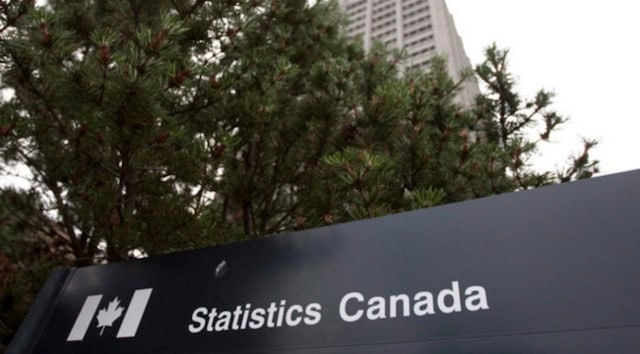
Canada’s economy expanded at an annualized pace of just 0.4 per cent in the first three months of the year, giving the country its weakest back-to-back quarters of growth since 2015.
The real gross domestic product reading for the first quarter followed a revised growth number of just 0.3 per cent in the previous quarter, Statistics Canada said Friday in a new report.
It was the slowest two-quarter stretch of growth since an oil-price plunge caused the economy to shrink over the first half of 2015.
Economists had expected growth at an annualized rate of 0.7 per cent for the first quarter, according to Thomson Reuters Eikon.
The Statistics Canada report said downward pressure on first-quarter growth was driven by weakness in net trade as imports increased 1.9 per cent and export volumes dropped one per cent for their first quarterly decrease since 2017.
Canada also saw a substantial contraction of 9.5 per cent in its exports of farm and fishing products as well as a 2.8 per cent drop in crude-oil shipments.
On the positive side, the agency said overall economic growth was boosted by the highest quarterly level of household spending in two years, following broad-based increases that included strength in auto purchases and audio-visual equipment.
The economy also saw an 8.7 per cent increase in business investments on equipment and machinery — the biggest jolt in 23 years. The surge was fuelled in part by significant investments in aircraft and other transportation equipment, the report said.
Looking ahead, the report’s month-to-month reading for March — the final month of the first quarter — suggested the second quarter could be off to a stronger start. March posted a 0.5 per cent increase compared to a 0.2 per cent contraction in February.
The first-quarter reading Friday was slightly higher than the Bank of Canada’s prediction of 0.3 per cent.
On Thursday, Carolyn Wilkins, the central bank’s senior deputy governor, said the recent economic slowdown was temporary. She said growth has already been accelerating in the second quarter — which the Bank of Canada has predicted will post 1.3 per cent growth.
From there, Wilkins said Canada’s economic expansion should pick up its pace throughout the rest of 2019.


